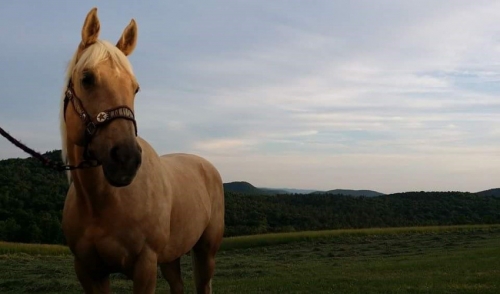{article.name}
Learning the Basics of Training Your Horse

- Share this:
- Share on Facebook
- Pin on Pinterest
- Tweet on Twitter
Training a horse is a challenging and awarding experience. Most professional trainers have years of experience and education through schools and workshops. If you are new owner and do not have a professional horse trainer readily available, then this article is for you. Follow this article to learn the basics of training your horse.
First and foremost, always practice safety and caution when handling a horse. If you are ever afraid to do something at any point, don’t hesitate to seek professional help. Before you being training your horse, make sure you understand your horse’s instinctive behavior, its physical limitations, and their ability to handle your demands. Horses are hard wired to sense and flee from predators, so make sure to always stay calm when assessing and handling your horse. Once the horse understands that you’re not worried, he won’t have any reason to be either.
The basics of all horse training begins with groundwork. As someone who wants to learn the basics, start your training with basic groundwork as it makes riding 10 times easier when you are ready to saddle and drive. Training your horse starts with groundwork practice such as leading your horse, touching exercises, building a rapport, and yielding to physical and driving aids by applying direct and indirect pressure. Your horse’s ability to follow your commands and respond in a positive manner is entirely dependent on its ability to appropriately react to pressure. This can be pressure from a lead rope, pressure from a heel to the side, and even pressure from its halter. Slowly practice leading with your horse by putting on his halter and attaching a lead rope to it. When your horse has fully accepted the halter and rope, you can practice leading the horse from the front and from the partner position until it becomes second nature to both you and the horse. Leading is a great time to work on your leadership skills and relationship with your horse. The stronger your leadership skills are, the more control you will have over the path and speed of your horse. Groundwork is also a good time to challenge your horse with different types of direct pressures, indirect pressures, and to show that you can place yourself in a position of authority when necessary. Teach your horse how to yield with direct pressure by applying pressure to certain part of your horse’s body when leading with the rope. For example, practice teaching your horse to yield by applying light pressure on the halter and bringing the nose to the flank. You can also begin to incorporate vocal commands that will aid your horse in moving certain directions and stopping on command.
The basics of training your horse are founded in mastering the fundamentals of groundwork so that you can ride and deal with your horse in a safe and fun manner. Therefore, take your time so that your horse will continue to grow, follow your lead, and progress in its training and development.
Special Offers
We are constantly adding new specials to our site. Be sure to check back often!


Comments